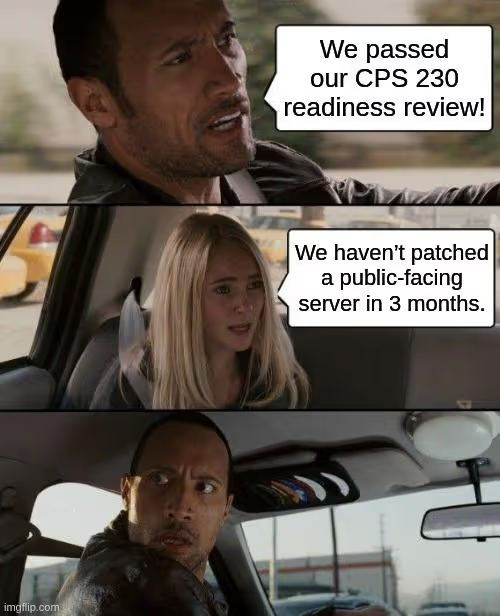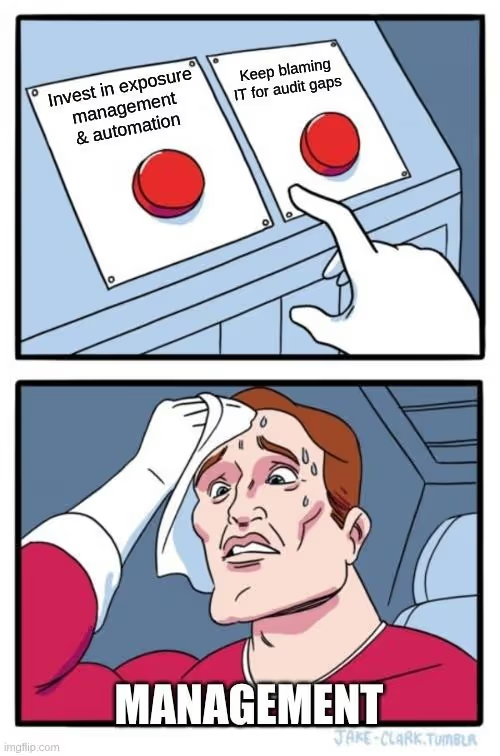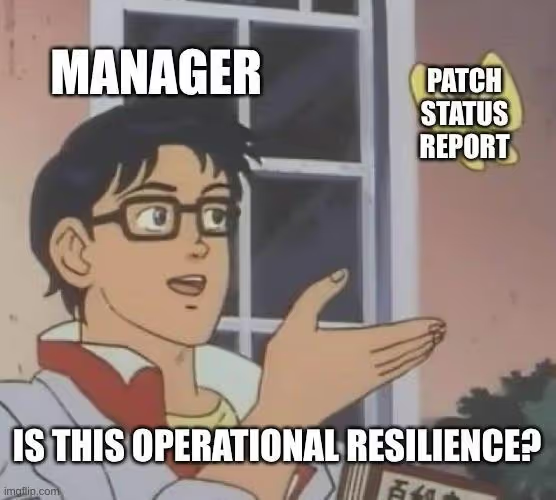
Australia’s cybersecurity regulatory landscape is rapidly evolving. The shift reflects a broader global trend: compliance is no longer a matter of documenting that policies exist, but of proving that they work.
This places an even greater responsibility on executive teams to ensure measurable outcomes, not just written intent. Traditional compliance methods, often built around point-in-time audits or reactive documentation, are insufficient in today’s dynamic threat environment. High-profile breaches have shown that attackers exploit not only technical flaws but also operational blind spots, such as outdated inventories or unpatched systems missed during infrequent reviews. As a result, static controls and annual reviews fail to provide defensible assurance.
Understanding the regulatory drivers
The new baseline for resilience and, by extension, for compliance rests on three pillars: visibility, prioritization, and automation. Organizations need up-to-date visibility into all digital assets, accurate risk-based prioritization of vulnerabilities, and the ability to respond at speed through automated remediation workflows. Without these, compliance frameworks remain theoretical rather than actionable. Australia’s cybersecurity regime is increasingly focused on real-world outcomes. Executives are now expected to prove that systems are not only protected in principle, but resilient in practice.
Three key frameworks (ASD Essential Eight, APRA CPS 230, and the SOCI Act) define this shift and establish new baselines for oversight, accountability, and measurable risk reduction.
ASD Essential Eight: Practical controls for common threats
The ASD Essential Eight (E8) outlines eight mitigation strategies ranging from application hardening to MFA/2SV to help organizations defend against common attacks. It prioritizes enforceable controls over theoretical frameworks, giving CISOs and CIOs a clear, actionable path to reduce exposure and meet government expectations.
The maturity model: Moving beyond minimum viable compliance
E8 maturity is scored from Level One to Level Three. Higher levels require consistent, enforced implementation across the environment, not just isolated policies. Boards and compliance leads must understand where they stand and how quickly they can credibly demonstrate uplift.
APRA CPS 230: A shift from policy to operational resilience
Effective July 2025, CPS 230 repositions cybersecurity as a business continuity imperative. Financial institutions must identify critical operations and ensure they can withstand cyber disruptions, including through tested, enforceable recovery strategies, not just policy declarations.
Third-party risk and continuity testing under CPS 230
CPS 230 also demands evidence of third-party resilience. Boards must confirm that key service providers can maintain continuity and participate in scenario testing. Supplier risk becomes an executive issue, not just a procurement concern.
SOCI Act: Safeguarding national infrastructure
The SOCI Act applies to operators of critical infrastructure across sectors like energy, water, healthcare, and communications. It imposes binding cybersecurity obligations, forcing boards to adopt a proactive risk governance model for nationally significant assets.
CIRMP: Translating risk management into action
At the center of SOCI’s cyber rules is the Critical Infrastructure Risk Management Program (CIRMP). Shifting expectations from theoretical preparedness to ongoing, provable execution, it mandates continuous monitoring, active risk treatment, and annual compliance reporting.
Taken together, these frameworks create a regulatory landscape where exposure reduction is the only defensible form of compliance.

Mapping exposure management to compliance outcomes
While compliance obligations often define what must be achieved, they rarely explain how. Exposure management fills this operational gap by embedding cybersecurity best practices into repeatable workflows that deliver measurable results. It supports compliance not through documentation alone, but through demonstrable reductions in cyber risk across the environment; an increasingly central requirement for alignment with the ASD Essential Eight, APRA CPS 230, and the SOCI Act’s CIRMP obligations.
Continuous asset discovery: The foundation of visibility
Asset visibility is the starting point. Exposure management tools automatically map systems, endpoints, and workloads across environments – including unmanaged assets often missed by legacy inventories. This supports E8 patching, CPS 230 continuity mapping, and CIRMP reporting.
The cost of blind spots in regulatory alignment
Missed systems undermine compliance. If assets aren’t tracked, patching can’t be enforced (E8), critical services can’t be protected (CPS 230), and annual CIRMP reports may be incomplete. Visibility must be continuous, not static.
Risk-based prioritization: Moving beyond CVSS scores
Rather than relying on severity scores alone, exposure management uses real-world exploit data and asset context to focus remediation where it matters. This includes awareness of which vulnerabilities are actively being exploited, consideration of how critical the affected asset is to business operations, and alignment with compliance policies and thresholds. This supports risk-aligned decision-making that satisfies auditors and regulators alike.
Exploitability and context: Triaging with precision
Prioritization models that factor in exploit likelihood, asset sensitivity, and compensating controls allow teams to justify remediation timelines and avoid compliance drift, which is critical under CIRMP and CPS 230.
Automated remediation: Bridging security and compliance
Automated patching and policy enforcement shorten remediation windows and reduce manual overhead. This improves the key “mean time to remediate” (MTTR) performance indicator and enables E8 controls to scale more effectively.
Essential Eight alignment through automation
Controls like “patch applications” and “patch operating systems” become more attainable with automation. It allows teams to move from intent to execution, driving measurable maturity uplift and audit-ready traceability.
Generating defensible evidence for audits
Modern exposure management solutions provide structured, timestamped logs of what was fixed, when, and why. Remediation timelines show how long vulnerabilities remained open before being addressed; risk justification records document the reasoning behind prioritization decisions - especially when deferred. Control coverage summaries make it possible to track indicators like MFA deployment or patching rates over time, all of which map directly to audit frameworks like E8, CPS 230, and CIRMP.
These controls and outputs enable boards and compliance teams to respond to scrutiny with objective, system-derived evidence. By embedding these capabilities into daily workflows, exposure management turns compliance from a static obligation into a dynamic, provable discipline fit for Australia’s modern regulatory environment.

Building an operating model around resilience
Operationalizing exposure management requires defined cadence and accountability. Weekly risk reviews ensure that new threats are addressed promptly, while quarterly reviews and scenario testing provide strategic oversight. This rhythm balances the need for agility with the board’s need for long-term visibility.
Scenario testing is particularly relevant under CPS 230, where continuity planning must be validated. Tabletop exercises using realistic breach scenarios test factors like technical response, executive decision-making, and interdepartmental coordination. These drills help organizations demonstrate preparedness and reassure auditors that their plans are not merely theoretical.
Several key metrics track the health and maturity of exposure management programs:
- Mean time to remediate (MTTR): Measures speed of risk response, directly tied to CPS 230 and E8.
- MFA coverage rate: A required element under E8 and a strong predictor of breach resilience.
- E8 maturity targets: Progress toward Level 3 or above in high-priority areas such as patching and application control.
- CIRMP reporting completeness: Ensures critical infrastructure operators meet annual reporting and internal oversight requirements.
These metrics not only inform internal risk management but also populate evidence dashboards that support regulatory disclosures and board oversight.
Exposure management must also be adaptive. As new vulnerabilities emerge, business operations shift, or regulations evolve, security controls must be reevaluated. Feedback loops (whether automated triggers for reassessment, human-led risk reviews, or both) ensure that programs remain effective and aligned with the organization’s evolving threat profile and obligations.
Boardroom checklist: Are we exposure-resilient?
- Is our Essential Eight maturity level independently verified and progressing toward target levels across all eight controls?
- Are third-party and supplier risks identified, continuously monitored, and tested as part of CPS 230 continuity planning?
- Does our CIRMP reporting framework draw on real-time exposure data and remediation status across critical assets?
- Are remediation actions timestamped, centrally logged, and reviewable to support audit and board-level accountability?
- Do our dashboards and reports show a decreasing trend in known exploitable vulnerabilities across critical systems?

vRx: Powering the exposure management “operating system”
vRx by Vicarius supports real-time, agentless discovery of assets across hybrid environments, including cloud, on-premises, and air-gapped systems. By avoiding reliance on endpoint agents, it reduces deployment complexity while ensuring full visibility into systems that often escape traditional inventory tools. This capability is critical for meeting visibility requirements under E8, CPS 230, and SOCI mandates.
Other features of the vRx platform include:
- Intelligent risk prioritization: vRx uses real-world exploit data, asset importance, and network exposure to contextualize vulnerabilities - focusing remediation on risks that matter most to your environment.
- Proactive mitigation with patchless protection: Virtual patches and mitigations can be deployed before vendor updates are available, allowing immediate risk reduction and compliance continuity with frameworks like Essential Eight and CPS 230.
- Exportable audit evidence and maturity tracking: The platform generates structured dashboards and reports (complete with remediation logs, timestamps, and control coverage) that align directly with regulatory audit and board reporting needs.
Taking the next step toward defensible resilience
The path to defensible resilience isn’t abstract. It starts with visibility, is built on prioritization, and succeeds through automation. Exposure management provides the operating system that turns policy into proof. Executive teams and risk leaders should begin by assessing current exposure management maturity, starting with an honest appraisal of visibility, remediation velocity, and control coverage. From there, set clear targets aligned with the ASD Essential Eight, which remains the most accessible and prescriptive framework for immediate uplift. Once foundational practices are established, organizations can expand into CPS 230 continuity planning and SOCI CIRMP requirements with greater confidence.
Exposure management tools like vRx simplify this expansion by embedding regulatory expectations into daily workflows - automating evidence generation, streamlining patching, and continuously aligning posture with compliance goals. Book a demo today to find out how we can help you manage your exposure.







.avif)




